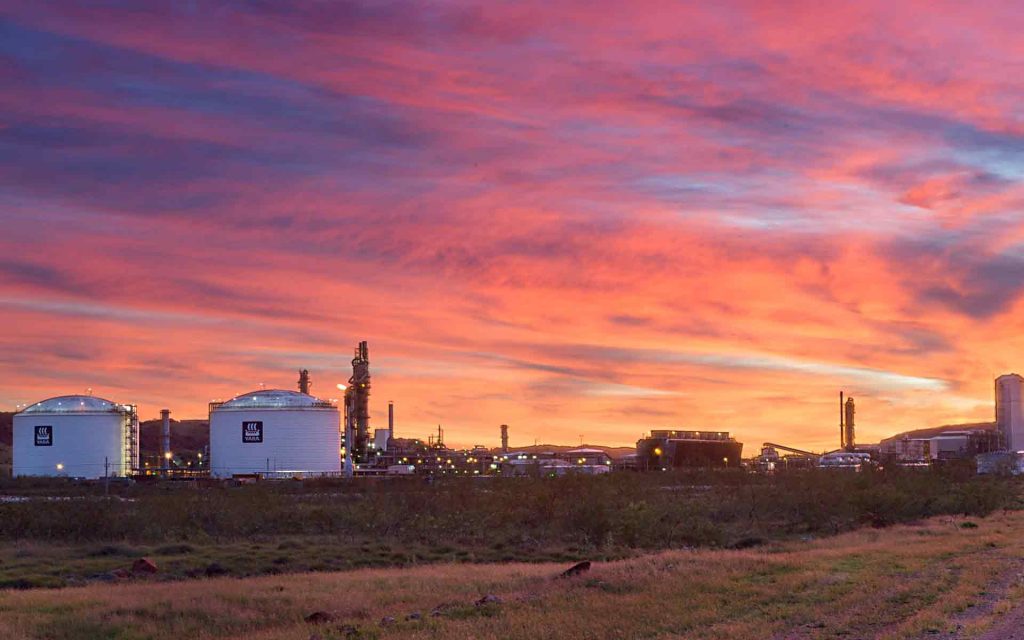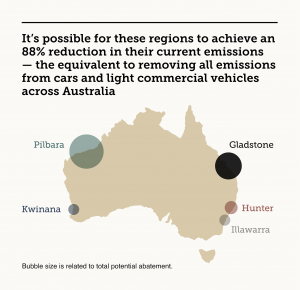Australia can slash industrial emissions, create jobs: report
A major new report outlines opportunities for Australia to cut industrial emissions to a fraction of their current level and create hundreds of thousands of jobs in the process.

A new report, produced in collaboration with some of Australia’s biggest companies and industry groups from finance and heavy industry, sets out how Australia’s industrial sector could cut carbon emissions by 88 per cent and create hundreds of thousands of jobs.
The Setting Up Industrial Regions For Net Zero Report, released in June, calls for significant investment of between $50 billion to $100 billion in key industrial regions, combined with coordination between industry, government, finance, community and energy stakeholders.
The report also urges the rapid deployment of existing technology solutions alongside support for the development and demonstration of new and emerging opportunities.
Early action such as developing multi-user infrastructure and investing in the creation of demand and supply for hydrogen, could lay the groundwork for much larger scale deployment of decarbonisation opportunities, the report says.
The benefits of prompt and coordinated action are quite startling:
- cut industrial emissions by almost 90 per cent
- create job opportunities for up to 380,000 Australian workers
- set up key industrial regions for net zero transition
But there are also significant challenges according to the research compiled by two not-for-profits, Climateworks Centre and Climate-KIC Australia, and backed by 18 of Australia’s largest companies as part of the Australian Industry Energy Transition Initiative (ETI). The ETI was established with funding support from ARENA.
Energy transformation
The investment required in the regions and enabling infrastructure would be between $50 billion and $100 billion. To power the changes, total national energy production would need to increase by up to half-as-much again.
That would mean existing renewable energy production would have to increase five-fold, both to replace existing national fossil fuel generation and supply the required increased power demand.
“This will require an unprecedented transformation of the energy system,” said Climateworks CEO Anna Skarbek.
“Governments will have a significant role to play in achieving this, with supportive policy, programs and support for regional leadership efforts, especially in infrastructure which is an enabler of decarbonisation.” she said.
Five regions in focus

For this report, five industrial regions came under the spotlight: the Pilbara, Kwinana, Hunter, Illawarra and Gladstone, although only the first four were examined in detail.
Between them, these five regions contribute around $166 billion to the national GDP and account for about one-eighth of Australia’s total emissions. The 18 industry participants who are part of the ETI represent approximately 30 per cent of the ASX100 market value.
The report finds these regions alone offer the potential of reducing annual emissions by 70 Mt CO2e. That’s equivalent to removing all emissions from cars and light vehicles across Australia.
But the report also says other industrial centres will need to contribute to decarbonising heavy industry, including, but not limited to:
- Bell Bay in Tasmania
- The Upper Spencer Gulf in South Australia
- Portland and the LaTrobe Valley in Victoria
- Darwin in the Northern Territory.
The historic formation of so-called industrial precincts in the regions, featuring concentrations of harder-to-abate activities, offers Australia a key opportunity.
“The regions we studied already have the industries, concentration of energy demand, investment, ports, industry knowledge and skills we need for Australia to thrive through the transition,” said Climate-KIC CEO Chris Lee.
“This is because precinct-scale responses present opportunities to leverage multi-user infrastructure and existing workforce skills, and more effective use of transmission, distribution and storage infrastructure, which drives emissions down,” he said.
If timely and effective action is taken, the report says the projected decarbonisation would boost climate resilience and contribute to reaching state and national net zero targets by 2050.
The Australian Industry ETI brings together key industry and finance participants to accelerate action towards achieving net-zero emissions in supply chains.
It focuses on developing pathways to reducing supply chain emissions across five sectors: iron and steel; aluminium; liquified natural gas; other metals, including copper, nickel, lithium; and chemicals, such as fertilisers and explosives.
The Australian Industry ETI and research partners are currently developing modelling of the energy system transition to understand what actions need to happen by when, to achieve decarbonisation in line with 1.5℃ .
Climateworks Industry System Lead Rob Kelly said industry partners would work closely on insights from the modelling.
“This is to develop strategic pathways to net zero emissions, to further inform an effective transition. They will also collaborate on tangible action projects and demonstrations to build learning and momentum,” he said.
Mr Kelly said the Australian Industry ETI’s efforts would continue to focus on accelerating action towards net zero emissions by 2050.
“It is a challenging path, but one that provides opportunities to position Australian industry to thrive in a decarbonised global economy.”
Australian Industry ETI partners include Australian Gas Infrastructure Group, APA Group, Aurecon, AustralianSuper, BHP, BlueScope Steel, bp Australia, Cbus, the Clean Energy Finance Corporation, Fortescue Metals Group, HSBC, Orica, National Australia Bank, Rio Tinto, Schneider Electric, Wesfarmers Chemicals, Energy & Fertilisers, Westpac and Woodside Energy.
LIKE THIS STORY? SIGN UP TO OUR NEWSLETTER

ARENA